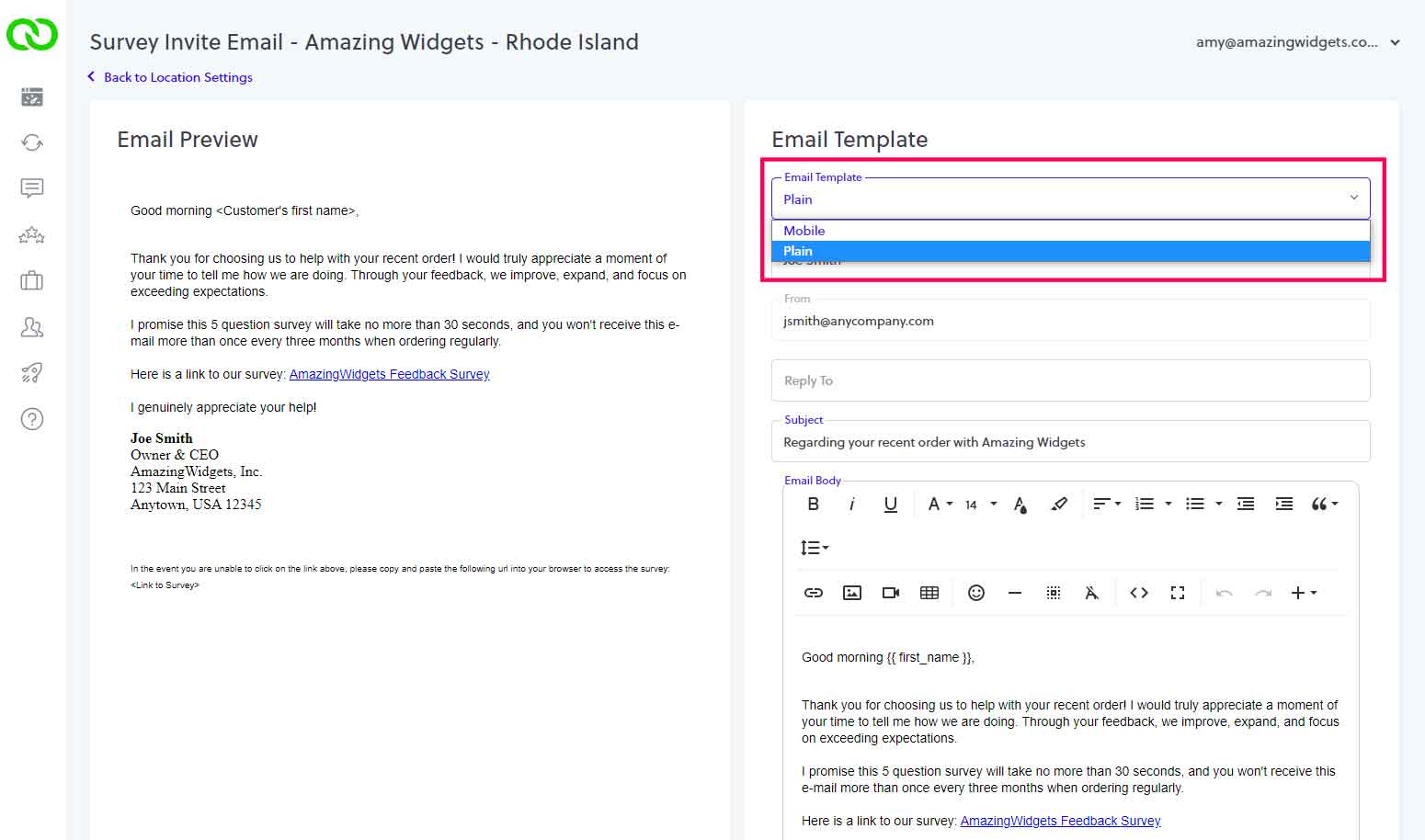June 2022
NEW - Mobile and Plain Email Templates

This month the team has released a new feature available in all plans of LoyaltyLoop. Now, you can choose between two email template styles when configuring the emails LoyaltyLoop sends to your customers. You can select the email template styles for Survey Invitation Email, Survey Reminder Email, Reviews Follow-Up Email (Promoter plan), and Campaign emails (Promoter plan). Choose between the "mobile" template designed for responsive rendering across all devices, or the "plain" template for a simple, basic email look.

Nobody likes to be blindsided. Information that shows itself out-of-the-blue is a symptom of having a Customer Experience Gap - the gap between how a business owner believes things to be versus how they really are. The very nature of LoyaltyLoop helps you close the customer experience gap by ensuring your customers' experience is consistent. Use Feedback by Filter to view customer feedback by sales rep and identify possible issues. Use the Other Services question to discover what your customers want before surprises turn into lost revenue.

Understanding the world of Search Engine Optimization (SEO) is the new frontier for many modern day marketers. Your Google reviews and overall Google Business Profile play a significant role in SEO. The more Google reviews you can generate, and the frequency at which you generate them, the better your SEO will be. More reviews coupled with a higher review rating will increase user clicks to your website. Optimizing your Google Business Profile page for SEO is critical to maximize your online presence and marketing efforts.

The world of online reviews has developed significantly since they first emerged in 1999. Of the major players, Google has emerged as the leader in this space. Due to the development of Google Business Profile and the power Google wields relative to all matters business-related on the Internet, they are poised to dominate the business review world for years to come. Getting great customer reviews frequently over time is one of the best long-term strategies for creating success online. Developing a strong online reputation is more important than ever. Google reviews are now the gateway to that success.